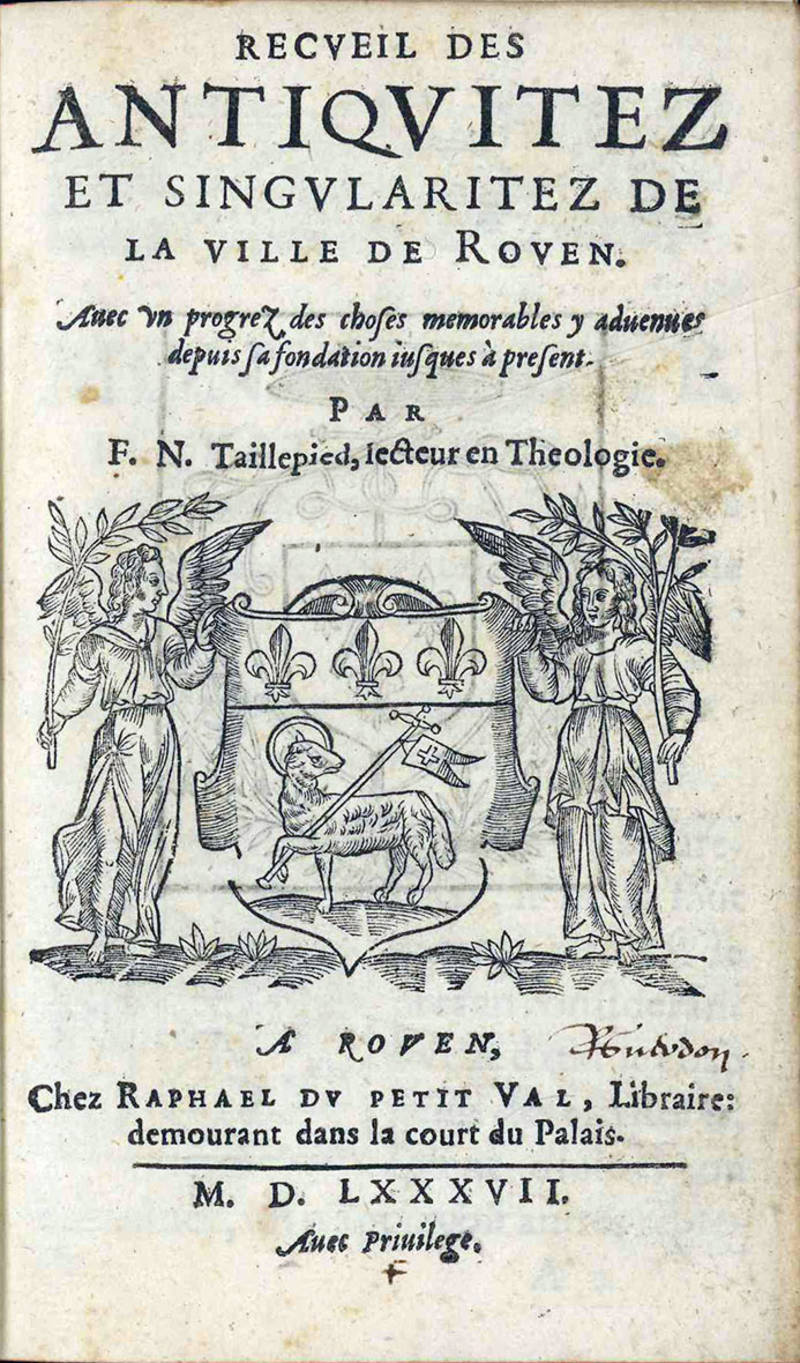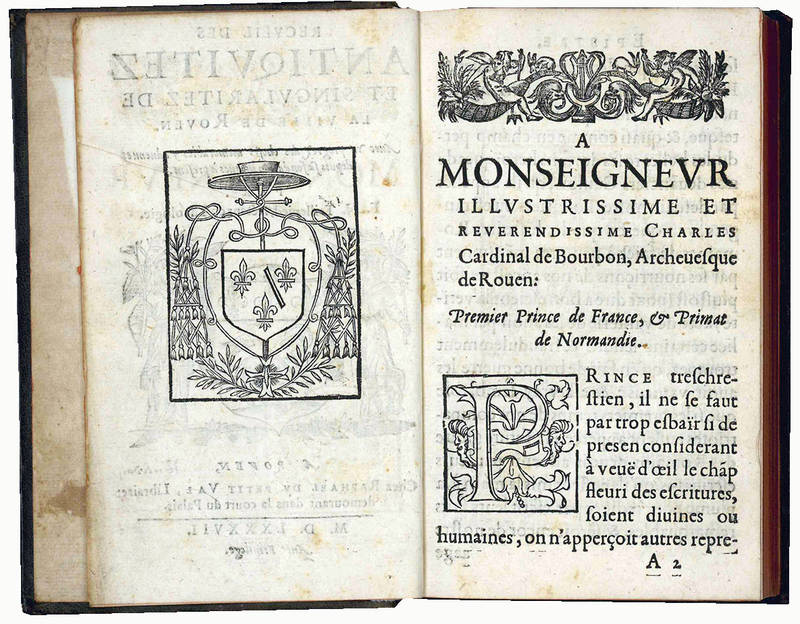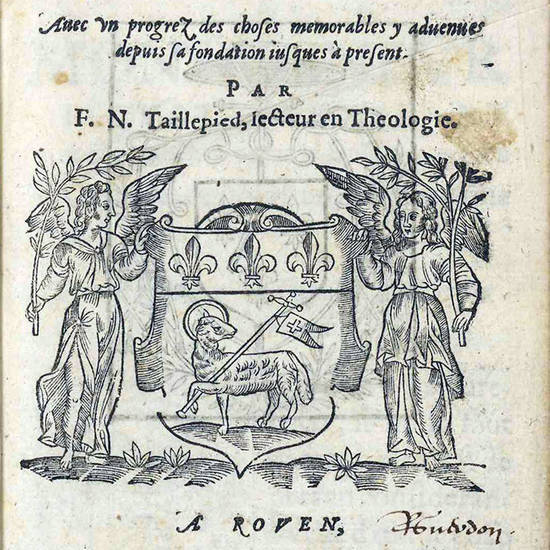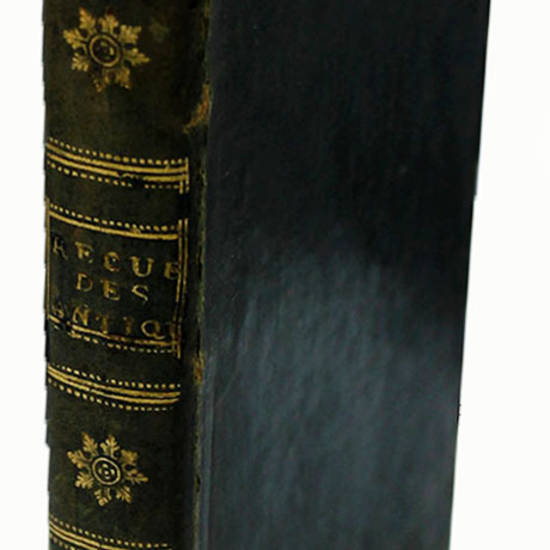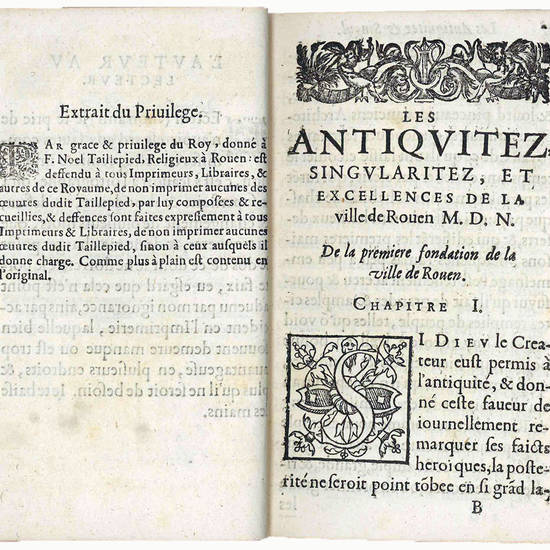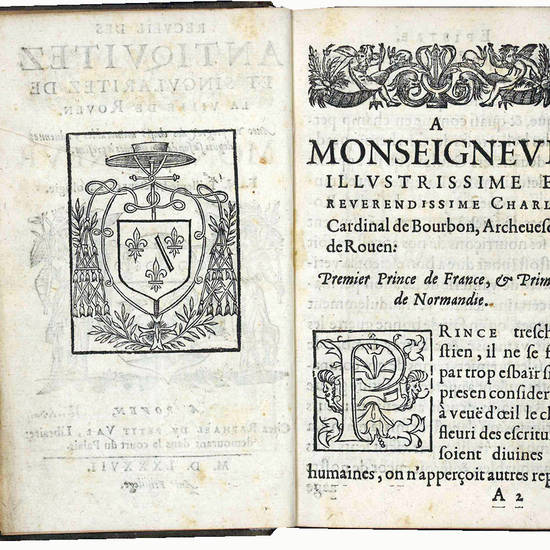8vo (152x93 mm). [16], 265, [5] pp., [1 blank] leaf. Collation: A-S8. Woodcut arms of Rouen on the title-page and those of Charles de Bourbon on the verso. Early 19th-century green calf, lightly rubbed, gilt back, red edges, some very light spots, but a fine copy.
FIRST EDITION of the earliest works on the history and antiquities of Rouen, which in Renaissance France was the second-largest-city behind Paris and the largest diocese with 1338 parishes. In the dedication to Cardinal Charles de Bourbon, who was then Archbishop of Rouen, the author states that he organized his work similarly to that of Gilles Corrozet on the antiquities of Paris. The volume opens with some laudatory poems on the author and of Rouen and continues with the foundation and early history of that city. There follow chapters on the gates, bridges, fountains, public squares, butcher's and fishmonger's shops, including a list of the streets in the various quarters with their outstanding houses and buildings. The work continues with a description of the principal monasteries, chapels and churches, with their organs and relics, a list of the confraternities and guilds of the city, short biographies of the various archbishops and dukes of Normandy, the legend of Robert the Devil, the ceremonies held during the traditional holiday of the Conception of the Virgin (including some poetry such as a chant royal, a ballade and a rondeau signed by H. James and Le Vasseur of Dieppe). The volume closes with occurrences in Rouen until 1586 under Archbishop Charles de Bourbon (1523-1590), then the eldest member of the House of Bourbon, who could claim the French throne by right of belonging to the Roman Catholic religion. A secret agreement, concluded by the party of Guise and Spanish king Philip II in 1584, confirmed that cardinal de Bourbon would inherit the crown after the death of Henri III. However, after the assassination of the duke de Guise (1588), cardinal de Bourbon was arrested and imprisoned in the fortress of Fontenay-le-Comte. When Henri III died the day after being mortally stabbed, Charles de Lorraine duke de Mayenne called for recognition of cardinal de Bourbon as king under the name of Charles X. The Parlement de Paris confirmed this claim (November 21, 1589). On March 5, 1590 the Parlement issued another decree calling for recognition of Charles X and putting a ban on the conclusion of peace agreements with Henri IV. However, this plan was short-lived as aged cardinal died in prison on 09 May 1590. There is evidence that in March 1590 he sent a letter to his nephew Henri IV acknowledging Henri as the legal heir to the crown.
There is an interesting passage on the introduction of printing into France on pp. 212-213, which reads: ''Du temps de ce mesme Archevesque fut inventé par un Allemand l'art d'Imprimer en la cite de Majence, & apporté en France par un ieune homme de Rouën surnommé Morin, lequel fit les premiers caracteres pour imprimer, & de fait Imprima plusieurs livres en ceste ville de Rouen: où depuis ce temps l'Imprimerie a tellement fleuri iusques à ce iour par la bonne diligence des Libraires et Imprimeurs qui y sont en bon nombre, que nulle autre Imprimerie ne surpasse auiourd'huy celle de Rouen en beauté de caracteres: de sorte que mesme ceux de Paris y envoyent le plus souvent leurs livres pour les faire Imprimer, comme lon fait de present.''
Noël Taillepied entered the Franciscan order in his youth and later changed to the Capuchins. He studies theology at Paris and taught several years at Pontoise and Angers, where he died in 1589. He was the author of a polemical volume with biographies of Martin Luther, Andreas Bodenstein and Pietro Martire, a history of the Druids, a résumé of Aristotelian philosophy in French, a treatise on apparitions and ghosts, a work on the antiquities of Pontoise and several theological treatises.
P. Aquilon & A.R. Girard, Bibliographie Normande, (Baden-Baden, 1985), p. 402, no. 2; Brunet, V, 646.
[150]

